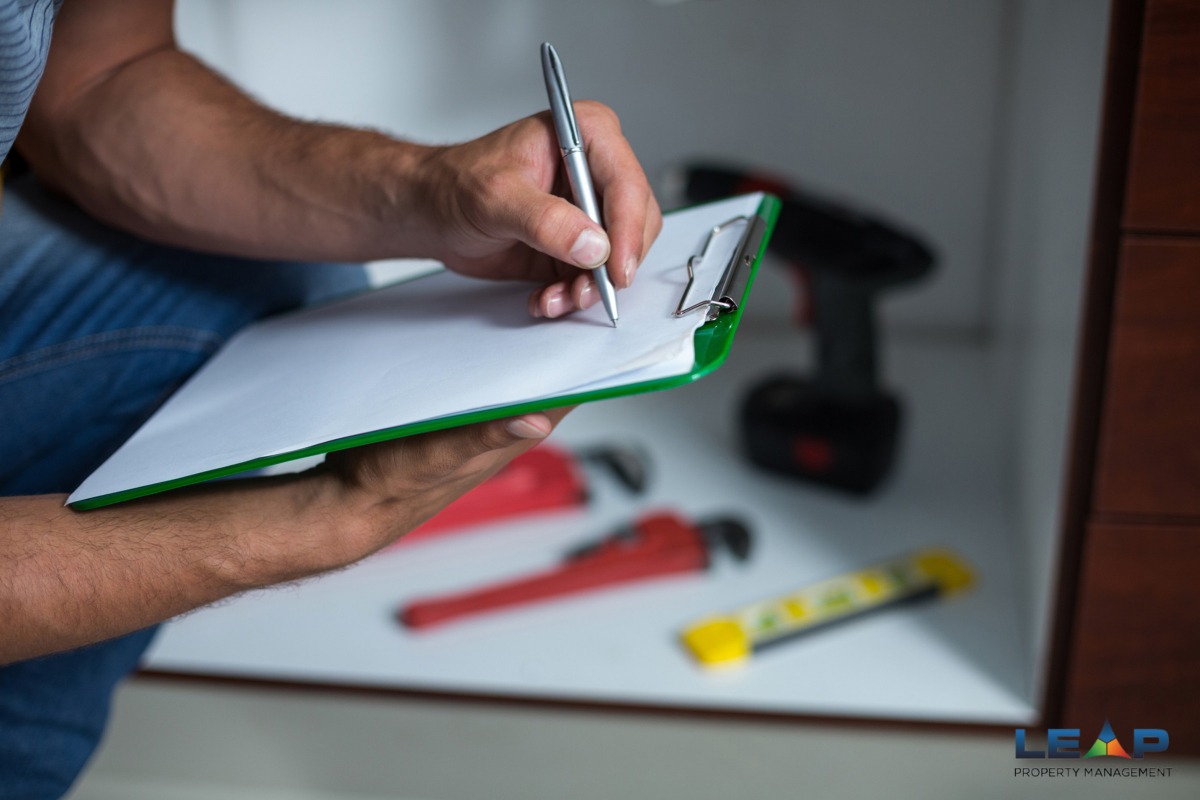
As an investor, you want to make sure you’re staying on top of your properties — and the best way to do that is through regular inspections.
When you perform regular inspections on your properties, you can catch any potential problems (like foundation issues, slab leaks, or water leaks) before they spin out of control — and cost you tens of thousands of dollars in repairs.
Inspections also give you the opportunity to monitor how your tenants are treating the property and to make sure they’re abiding by the terms of their lease agreement. For example, inspections allow you to check for things like unauthorized pets or additional tenants living in the property or to make sure tenants are maintaining the lawn.
Related Post: Who Should Manage Your Rental Property Lawn Maintenance?
In Texas, you can inspect your rental properties any time you like (although in order to respect your tenants’ privacy, you’ll want to give them a reasonable amount of notice; 24 hours is a good rule of thumb). But when you’re an out-of-state investor, you’re not on the ground to just pop in and do an inspection whenever you want.
When you live out of state, it can be a challenge to stay on top of inspections at your rental properties — but that doesn’t mean you can let them slide.
Let’s take a look at how often you need to perform inspections on your out-of-state rental property:
When Inspections Need to Happen
Before we dive into how often you need to inspect your properties, let’s talk about under what circumstances they need to happen. There are two types of inspections: red flag and routine.
Red Flag Inspections
Red flag inspections need to happen anytime you’re made aware of a potential issue with your tenant or property. “Red flags” that would warrant an inspection include things like HOA violations, multiple late payments, or getting strange repair requests that allude to damage caused by the tenant (like a hole in the wall or dent in the garage door).
These issues are “red flags” that your tenant isn’t taking care of the property — and you need to schedule an inspection before too much damage is done.
Routine Inspections
The other kind of inspection is a routine inspection. Routine inspections are built into your lease agreement; they can be scheduled at regular intervals (like every 6 months) and/or any time a major repair is necessary (like following inclement weather or if a major appliance needs to be replaced).
Both red flag and routine inspections need to happen on a regular basis in order to preserve the integrity of your property. But the question is, as an out-of-state investor, how many of those inspections actually do you have to do in person?
Both red flag and routine inspections need to happen on a regular basis in order to preserve the integrity of your property.
How Often Should Out-of-State Investors Conduct In-Person Inspections?
The (somewhat surprising) answer is: never.
Of course, if you’re ever in town and want to visit or inspect one of your properties, that’s your prerogative — but when you’re working with the right property management company, there’s no need for you to visit your properties in person.
Your property manager should be handling the entire inspection process and make sure all issues, whether they’re routine or red flag, are taken care of for you.
Staying Involved in the Inspection Process (Even When You’re Thousands of Miles Away)
Now, if you’re not the “hands-off” type of investor, no worries! There are ways you can stay involved in the process without having to fly to your property every time an inspection rolls around.
Talk to your property manager and ask them to loop you into the actual inspection. You can have your property manager do a video walkthrough of the property while you’re on FaceTime or Skype.
As an out-of-state investor, there’s no need for you to be on hand every time an inspection needs to happen. The key is finding a property management company you can trust to manage the inspection process.
Or, if you don’t want to do the inspection in real time, you can have your property manager do a photo walkthrough and send over all the photos, notes, and documentations so you can get a handle on the inspection, the state of the property, and any repairs that need to be completed.
It’s important to stay on top of inspections if you want to keep your properties in excellent shape. But as an out-of-state investor, there’s no need for you to be on hand every time an inspection needs to happen. The key is finding a property management company you can trust to manage the inspection process (and one who will keep you looped in on all the details).
Looking for a property management company to manage your Dallas-Fort Worth properties? Get in touch today to learn more about property management services from LEAP.


